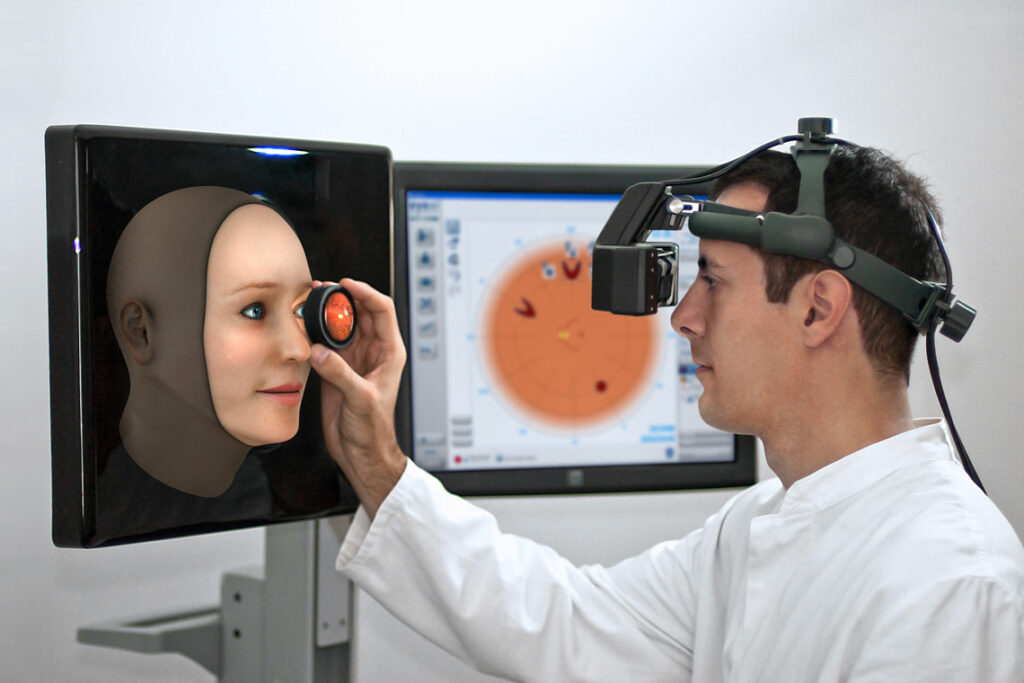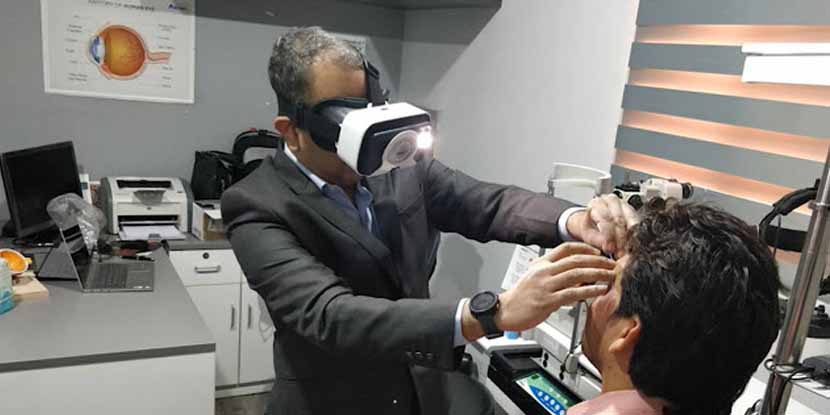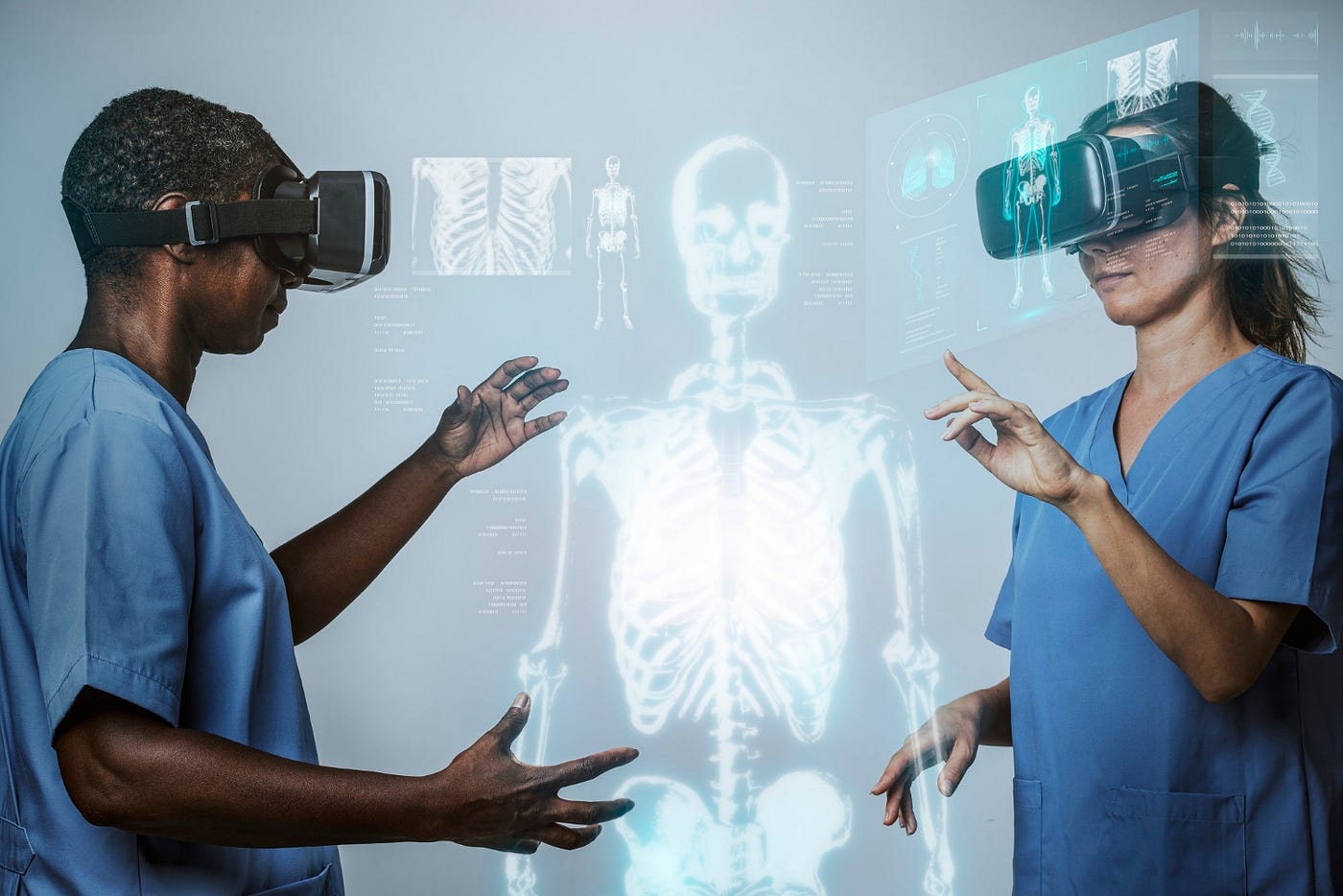
Virtual Reality in Ophthalmology: How VR is Changing the Face of Ophthalmology
Virtual reality (VR) is revolutionizing industries across the board, from entertainment to healthcare.
In ophthalmology, VR is proving to be a game-changer by providing doctors with new tools to diagnose and treat eye diseases. Virtual reality in ophthalmology is revolutionizing the way eye care professionals diagnose and treat patients.
VR technology can create immersive environments that simulate real-world experiences, allowing doctors to see inside the eye and identify diseases that may not be visible to the naked eye. Ophthalmologists use virtual reality in ophthalmology to simulate complex surgical procedures, providing a safe and immersive environment for training. Remote consultations have become more engaging and effective with the integration of virtual reality in ophthalmology, allowing ophthalmologists to interact with patients from a distance.
In this article, we will explore how VR is revolutionizing ophthalmology and its potential benefits and challenges.
Benefits of Virtual Reality in Ophthalmology
Incorporating virtual reality into ophthalmology practices has the potential to improve patient care, enhance medical education, and drive innovation in the field.
Virtual reality tools are becoming more accessible and cost-effective, making them a valuable addition to ophthalmology practices of all sizes. By using virtual reality in ophthalmology, researchers can innovate and test new surgical approaches, pushing the boundaries of eye care.
1. Improving Diagnosis via 3D Representation of the Eye

Source: Haag-Streit Simulation
One of the significant benefits of using VR in ophthalmology is the ability to diagnose eye diseases more accurately. VR technology can create a 3D representation of the eye, allowing doctors to see inside the eye and identify potential issues.
For example, doctors can use VR to identify cataracts, macular degeneration, and glaucoma, which are some of the most common eye diseases that affect millions of people worldwide. With VR, doctors can get a detailed view of the eye and diagnose the disease early, which can lead to more effective treatment.
2. Enhancing Surgical Procedures in a Simulated Environment
Another significant advantage of using VR in ophthalmology is the ability to train doctors and medical students. With VR, doctors can practice surgical procedures in a simulated environment before performing them on patients.
This helps doctors to improve their skills and develop new techniques without risking the health of their patients. Medical students can also benefit from VR training, allowing them to get hands-on experience without the need for a cadaver or live patient.
3. Powering Visual Acuity and Reducing Anxiety
VR technology can also be used for treating eye diseases. For example, doctors can use VR to create a simulated environment that helps patients with vision impairments to improve their visual acuity.
Additionally, VR can be used to provide patients with a distraction during medical procedures, reducing anxiety and discomfort. The three-dimensional data visualization made possible by virtual reality in ophthalmology aids in the diagnosis and management of eye conditions, thus reducing anxiety.
4. Providing Better Treatment Planning
Virtual reality can assist ophthalmologists in planning complex surgeries. By visualizing the surgical procedure in a virtual environment, surgeons can anticipate challenges and refine their approach. Ophthalmologists and researchers can use VR to develop and test new surgical techniques and technologies. This accelerates innovation in the field.
What Are the Challenges of Using VR in Ophthalmology
While there are many potential benefits to using VR in ophthalmology, there are also some challenges. One of the significant challenges is the cost of the technology. VR systems can be expensive to purchase and maintain, which may limit its use in some medical facilities.
Additionally, the use of VR in ophthalmology requires specialized training, which may be time-consuming and costly for medical professionals.
The Future of Ophthalmology with Virtual Reality Technology

Source: American Academy of Ophthalmology
Virtual reality is revolutionizing ophthalmology by providing doctors with new tools to diagnose and treat eye diseases. With VR technology, doctors can see inside the eye, identify diseases early, and develop new treatment techniques.
While there are challenges to using VR in ophthalmology, such as cost and training requirements, the benefits are significant. As the technology continues to develop, we can expect to see more widespread adoption of VR in ophthalmology and other medical fields.
With the increasing affordability and accessibility of virtual reality technology, its adoption in ophthalmology is on the rise, benefiting practices of all sizes. VR has the potential to improve patient outcomes and enhance the quality of care in ophthalmology, making it an exciting development in the field of medicine.
Trending
-
1 Mental Health Absences Cost NHS £2 Billion Yearly
Riddhi Doshi -
2 Gut Check: A Short Guide to Digestive Health
Daniel Hall -
3 London's EuroEyes Clinic Recognised as Leader in Cataract Correction
Mihir Gadhvi -
4 4 Innovations in Lab Sample Management Enhancing Research Precision
Emily Newton -
5 The Science Behind Addiction and How Rehabs Can Help
Daniel Hall





Comments